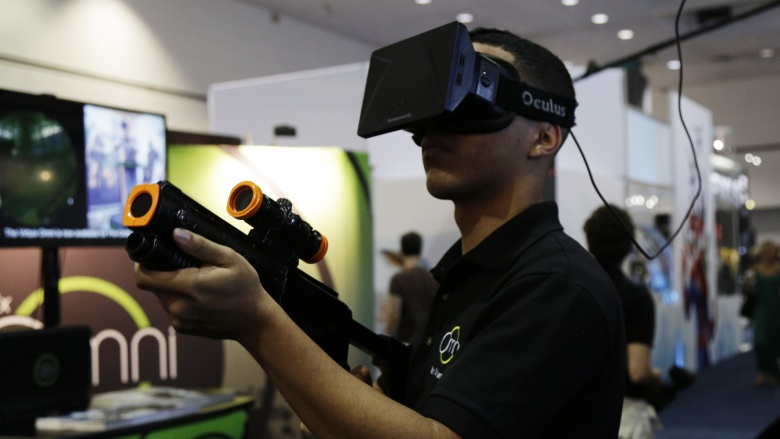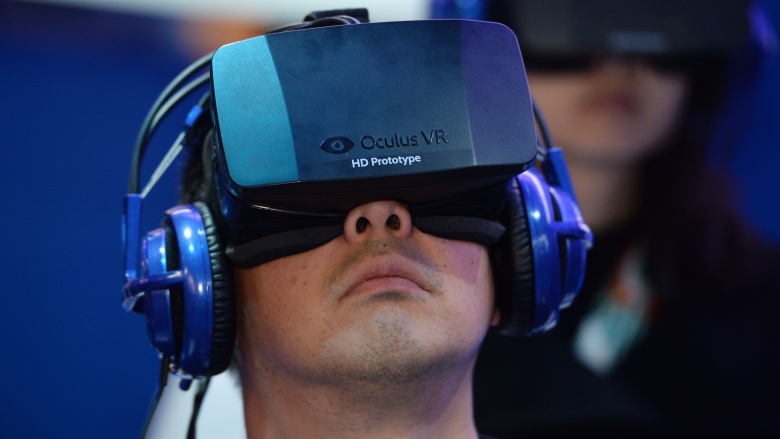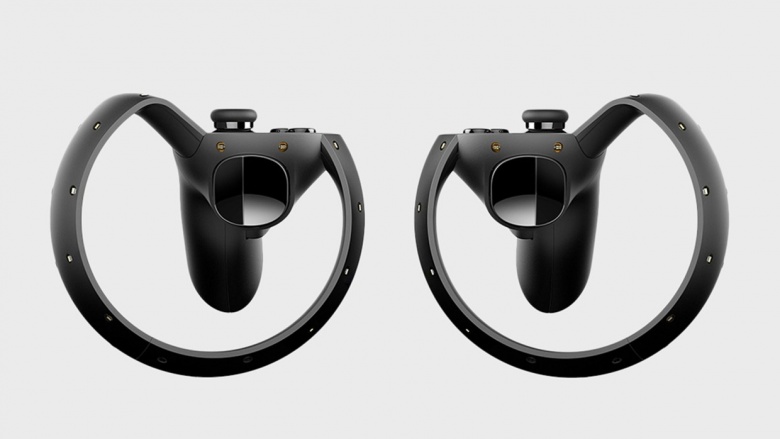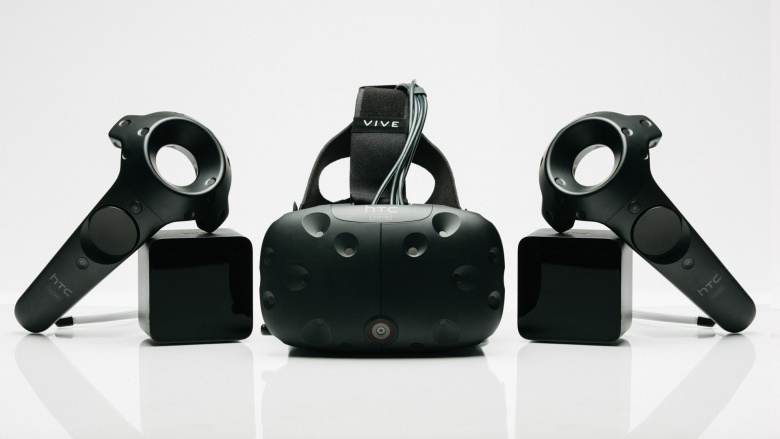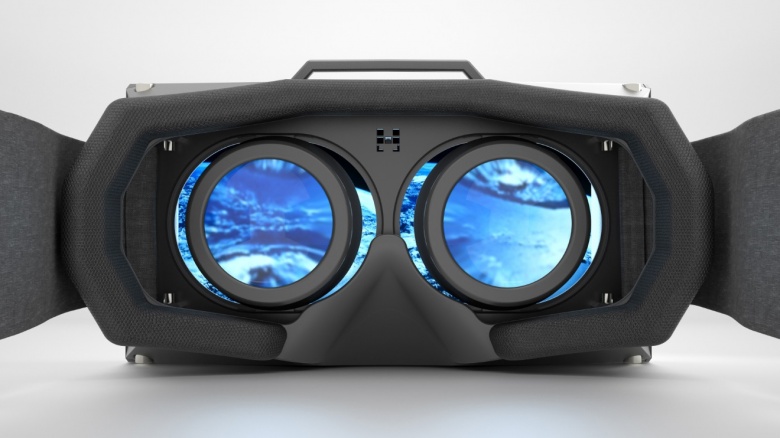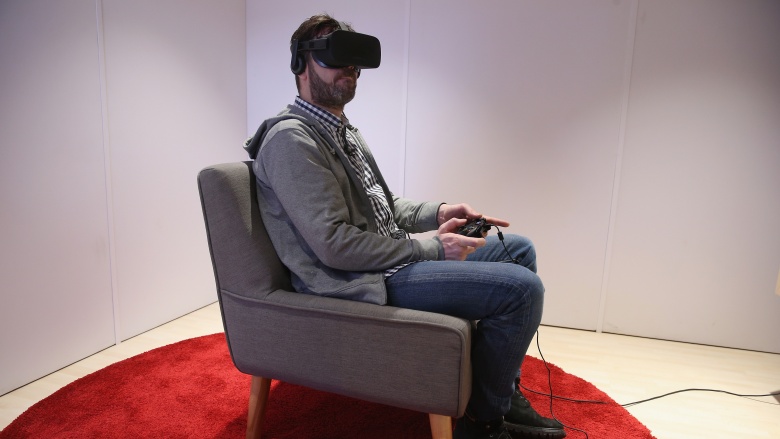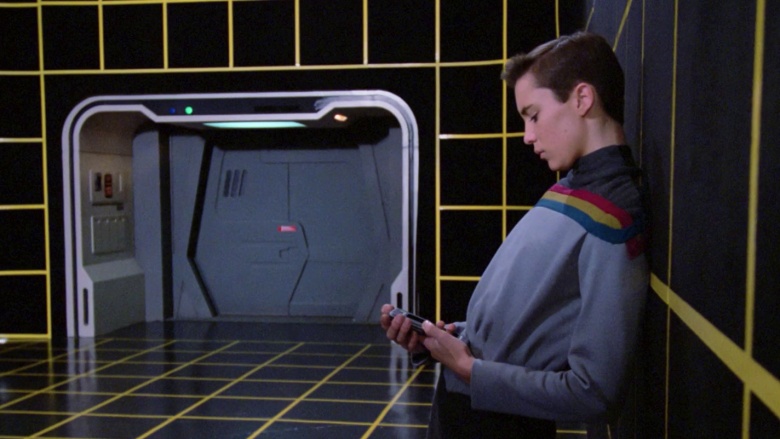Why You Should Wait On The Oculus Rift
The Oculus Rift promises to be the next big thing in gaming, bringing us all one step closer to making video games feel real; after all, the device's name suggests that it can use your eyes to bridge the gap between fantasy and reality. This is the first time we're seeing accessible, immersive virtual reality technology at home, and it's exciting. But it's also a little worrying. Geeks have dreamed of this VR experience for decades, but now that we're taking the first big steps into an imaginary world, we're waiting on buying in. Here's why.
The price isn't right
By itself, the Oculus Rift costs about $600, but even at that cost, it's not a self-contained gaming system. In order for your Rift to run, you'll need to hook it up to a pretty high-end computer with some very fancy specs. Compatible PC models are being sold off the shelf at around $1,000, but even the most resourceful DIY gamer will probably only be able to get that cost down to around $700. You're looking at a $1,500 gaming system, which may be a fair price to some truly dedicated early adopters. But that easily prices out anyone without an extra kidney to scalp.
Tethered head syndrome
The Rift's single-cable setup beats the HTC Vive's spaghetti of cables by a landslide, but it's still a pretty harsh reminder that you really can't actually stroll too far into any virtual world. Not only do you have to remain at a tether's length to your computer, lest you suffer whiplash or the unceremonious sacrifice of your favorite mug to rogue cord tangling. But you also need to stay aligned to the Rift's sensor array. So far, virtual reality extends to wherever you can turn your head, and that's it.
Untouchables
Oculus Rift will release a set of add-on touch controllers in the coming months, and early reviewers have already fallen in love with them. But comparable controls are already packaged with the Vive. It's not as though either of these are awesome finger-responsive Power Gloves, but rather heavily modified takes on Wii-chucks that respond to motion and button pressing, giving you the very loose sensation of actually holding things. If you hoped to give a virtual Vader a very specific finger in Battlefront, you'll just have to wait for EA to release the emote, because those birds aren't flipping any time soon.
Losing the race
Can two high-end VR headsets exist in the same universe? Tech historians will remember that the Segway was supposed to change the world, and that HD DVDs lost the format war to the mighty Blu-ray. According to multiple reviewers, the Rift is already behind the Vive when it comes to the sensation of immersion, even though the Rift is a more comfortable experience. If the Rift can't keep up with the Vive, game makers might not be ready to develop games for both expensive, competing luxury peripherals if one isn't selling strong.
The strain
In a much larger sense, we don't really know how VR headsets will physically affect human beings. Excessively sedentary gaming causes obesity, blood clots, migraines, and general physical grossness. So what will strapping a miniature TV to our faces do? Will focusing our eyes on a screen inches away from our face for hours at a time eventually damage our vision? Should we wait thirty minutes after Battleborn to get in our cars and drive somewhere? Will No Man's Sky's almost-infinite expanses cause another bout with Avatar Syndrome? We literally will not know until it's too late for some. We couldn't even handle Wii controllers without destroying expensive TVs, guys.
Perfectly aligned
One prominent reviewer complaint is that the Rift headset has to be perfectly aligned in order for it to work properly. That's not an easy balance to reach between the tugging cord, constant movement to see your surroundings, and keeping the Rift's straps at the perfect tension between "comfortable" and "face-scarring vicegrips." Like older big screen televisions, the Rift has to be enjoyed from straight ahead, or else you'll just get blurriness and mild disorientation. Time and technology will eventually mitigate this, but it's just not there yet.
Absolute isolation
We're taking bets on how long it will take for people to be robbed or killed in their own homes because of the near-total sensory isolation caused by the Oculus Rift. If your house is on fire or someone is screaming for help, but most of your senses are in another reality, how easy is it for the human brain to detach and distinguish between the two? The Rift's headphones cancel out almost all noise from the outside, and only the barest sliver of actual reality peeks in from around the edges of the viewer. In other words, the Rift makes you pretty useless in the event of a real emergency. Make sure everything is baby-proofed, the stove is off, and there's no one around for five miles.
Game on
The Rift features thirty games at launch, and while some reviewers have expressed delight at all of them, more realistic accounts say that about a third of these actually offer the immersive worlds that the Rift is designed for. Having truly awesome lunch titles is pretty vital for a system's success, or else you get something like the Wii U, where no one really knows how to leverage the system's unique hardware to make a memorable game. Even the best games, like Adr1ft, had to be developed without the essential touch controls because of development lag.
Still not a Holodeck
Future-nerds, don't forget: the Oculus Rift is still not a holodeck. Even haptic touch controls are not hard light holograms, and you'll have to stay seated for this one. Right now, VR is still in the phase where you can step into an imaginary place, look around, and kinda push stuff, which is still a pretty important advancement towards taking a holiday with Ensign Ro on the Starship Enterprise. The Oculus Rift has come a long way in a short time, but it needs to come a little further before it's going to prompt you to trade in your PS4.

